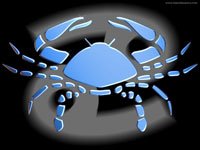Over view of pancreatic cancer
Located at the back of the abdomen, behind the stomach is pancreas, a spongy, tube-shaped organ about 6 inches long. It is connected to the duodenum, the upper end of the small intestine. Pancreas has a narrow end of the pancreas, called the tail, which extends to the left side of the body. The main fuctions of pancreas include producing pancreatic juices and hormones, including insulin. Pancreatic juices, also called enzymes, help in digesting the food in the small intestine. Insulin controls the amount of sugar in the blood. Both enzymes and hormones are needed for proper functioning of the.
The cancer that starts in pancreas is called pancreatic cancer. Pancreatic cancer is not contagious. No one can "catch" cancer from another person. Just like most of the cancers the exact cause of the pancreatic cancer is unknown.
Risk factor(s)/cause(s) of pancreatic cancer
Smoking is a major risk factor. Research done by scientists show that cigarette smokers develop pancreatic cancer two to three times more often than nonsmokers. Quitting smoking reduces the risk of pancreatic cancer, lung cancer, and a number of other diseases.
Symptoms of pancreatic cancer
Most of the cancers don’t show very early signs. Since early pancreatic cancer doesn’t show early symptoms, its called a "silent" disease. Pancreatic cancer may also cause or show following symptoms:
Jaundice: If the tumor blocks the common bile duct and bile cannot pass into the digestive system, the skin and whites of the eyes may become yellow, and the urine may become darker. This condition is called jaundice.
Nausea
Loss of appetite
Weight loss
Weakness
As the cancer grows and spreads, pain often develops in the upper abdomen and sometimes spreads to the back. The pain may become worse after the person eats or lies down.
Pancreas consists of cells that produce insulin called islet cells. A rare type of pancreatic cancer, called islet cell cancer, begins in these cells. Islet cells are also called the islets of Langerhans. Islet cell cancer can cause the pancreas to produce too much insulin or hormones and symptoms related to it are:
Weakness or dizziness
Chills
Muscle spasms
Diarrhea
All these above symptoms may be caused by cancer or by other, less serious day to day problems. Thus on experiencing such symptoms, a doctor should be consulted immediately.
Diagnosis of pancreatic cancer
A complete physical exam and the patient’s personal and family medical history is of utmost importance to diagnose pancreatic cancer. The doctor checks the temperature, pulse, blood pressure of the patient and usually orders blood, urine, and stool tests. The doctor may also ask for a "barium swallow," or "upper GI series." For this test, the patient drinks a barium solution before x-rays of the upper digestive system are taken. The barium shows an outline of the pancreas on the x-rays.
Other tests may be ordered, such as:
An angiogram
CT scans
Transabdominal ultrasound
ERCP
Endoscopic ultrasound
Biopsy
Laparotomy
Treatment of pancreatic cancer
Cancer of the pancreas is curable only when it is found in its earliest stages, before it has spread. Otherwise, it is very difficult to cure. However, it can be treated, symptoms can be relieved, and the quality of the patient's life can be improved. The factors affecting the treatment of pancreatic cancer depend on a number of factors such as type, size, and extent of the tumor as well as the patient's age and general health. The treatment methods involved are as follows:
Radiation therapy
Chemotherapy
Biological therapy
Surgery: Surgery may remove all or part of the pancreas and sometimes a portion of the stomach, the duodenum, and other nearby tissues. This operation is called a Whipple procedure. There are cases where cancer in the pancreas is impossible to remove. In such cases the surgeon may create a bypass around the common bile duct or the duodenum if either is blocked.
Source

